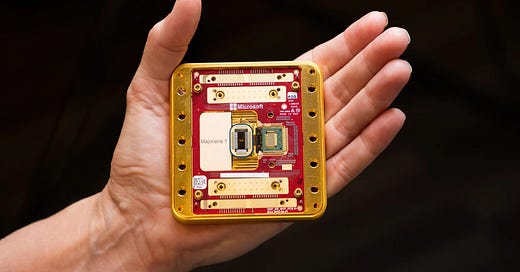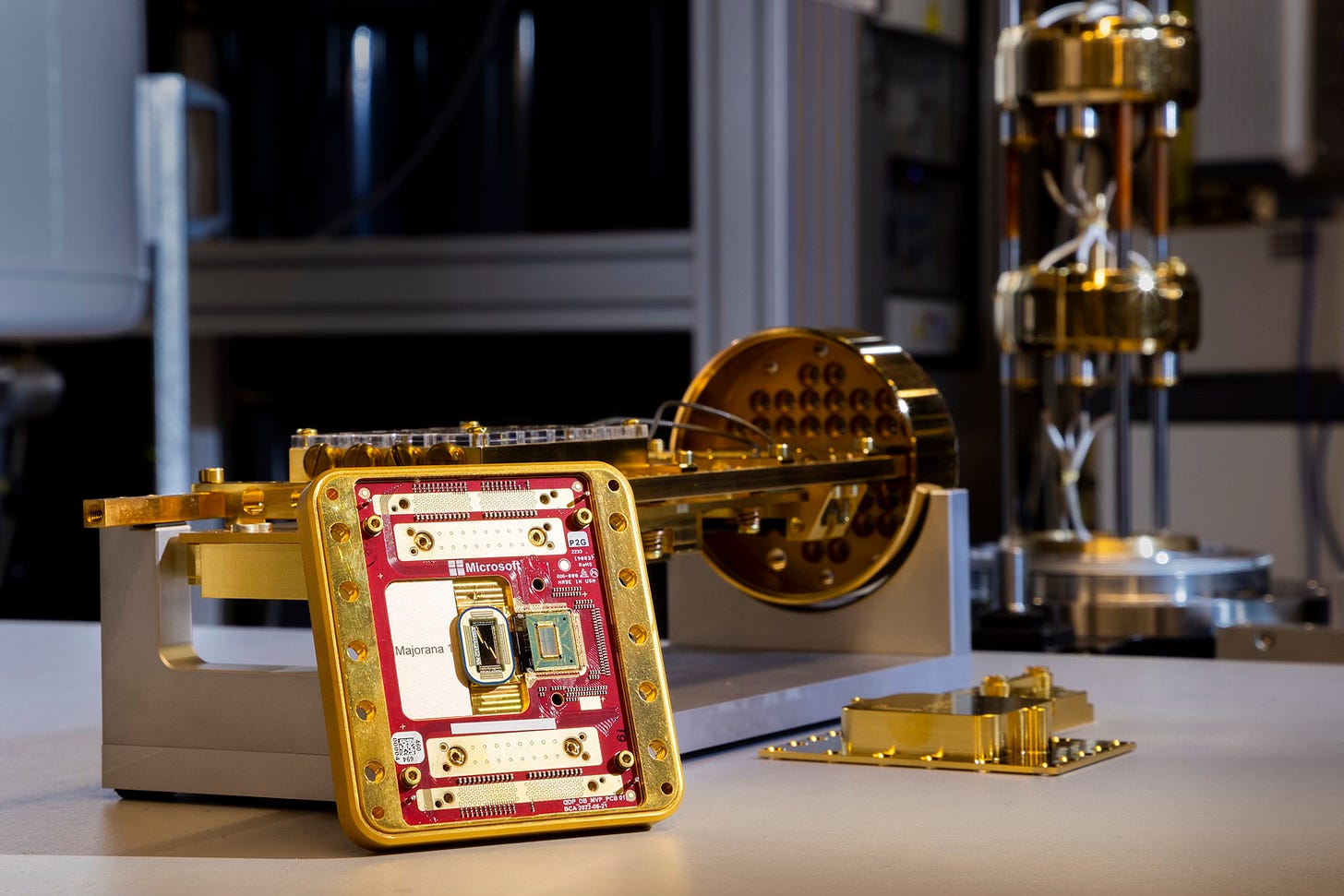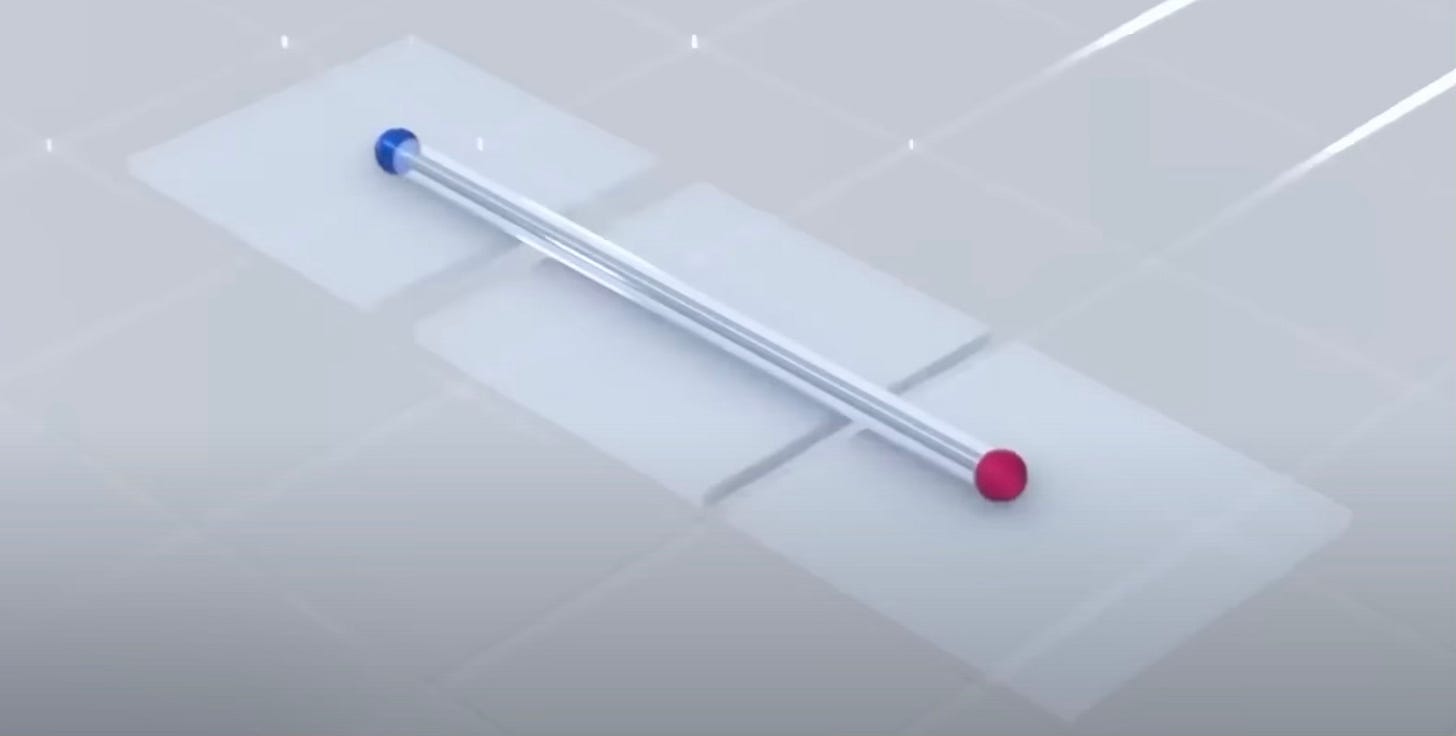The truth about New Microsoft's Majorana chip
Recently, Microsoft released its new quantum chip, Majorana 1, which has generated significant interest because it is not an average quantum chip. Microsoft has reportedly created an entirely new state of matter—a so-called topological state—that it uses to perform quantum computations.
Let’s break down how it works and some recent concerns surrounding it.
Majorana 1
Microsoft has introduced Majorana 1, the first quantum chip powered by a new type of qubit—topological qubits. It’s named Majorana because these qubits feature Majorana particles, exotic quantum entities that form the foundation of Microsoft’s "secret sauce."
These qubits are made from a novel material called a topoconductor, a combination of a superconductor (aluminum) and a semiconductor (indium arsenide). This combination enables an entirely new state of matter—topological superconductivity. To achieve this state, the qubits must be cooled near absolute zero (-240°C or - 400°F) and tuned with magnetic fields.
The biggest challenge in quantum computing is errors. Unlike classical chips, quantum chips are highly sensitive to noise. Even the slightest disturbance—heat, vibrations, or cosmic rays—can disrupt their calculations. To counter this, quantum computers require massive cryogenic systems to keep them much colder than outer space.
This fragility limits scalability. Today’s largest quantum computers operate with just a few thousand qubits, far from the millions needed for real-world applications. This is why Microsoft has focused on topological qubits, which are reportedly inherently protected from noise and designed for scalability.
Topological Qubits: How They Work
Topological qubits are made from superconducting nanowires, with quantum information stored at both ends of the nanowire.
Unlike other qubits—superconducting, trapped ions, photonic, or diamond-based—which rely on particles like ions or electrons, topological qubits are based on a topological state.
The setup consists of a nanowire with quantum dots at both ends, functioning like a gate in a classical transistor.
When the gate is open, electrons flow freely.
When closed, some electrons get trapped, and the even or odd number of these electrons defines the qubit’s state.
These qubits can then be interconnected into larger systems.
Why Majorana Particles
The challenge with quantum computing is noise—even the slightest disturbance (radiation, heat, cosmic rays) can destroy quantum information. That’s where Majorana particles come in. These particles "hide" quantum information by distributing it non-locally across multiple Majoranas, rather than in a single particle.
The quantum information is stored between two ends of a superconducting nanowire, about 3 microns apart (3000 nm).
This distributed storage makes it more resilient to noise, as it's unlikely for an external disturbance to affect all locations at once.
This property allows the qubit to maintain its coherence for longer.
I spoke with Krysta Svore, Distinguished Engineer and VP at Microsoft—and she mentioned that topological qubits could be 100 to 1000 times better in terms of noise resistance.
The Reality Check
Microsoft claims this qubit type can scale to millions of qubits, but they haven’t done this yet. The palm-sized Majorana 1 chip currently has just 8 qubits, with each qubit device measuring ~10 microns x 10 microns—relatively large compared to the dimensions of modern microchips.
It’s an interesting development, but one could argue that the Majorana chip isn’t as groundbreaking as the headlines suggest. Over the past few days Microsoft’s claim of using Majorana modes has faced further criticism. While topological qubits are promising, the evidence presented in Microsoft's recent paper has been questioned, raising doubts about how close they truly are to a practical breakthrough.
Keep reading with a 7-day free trial
Subscribe to Deep in Tech Newsletter to keep reading this post and get 7 days of free access to the full post archives.






